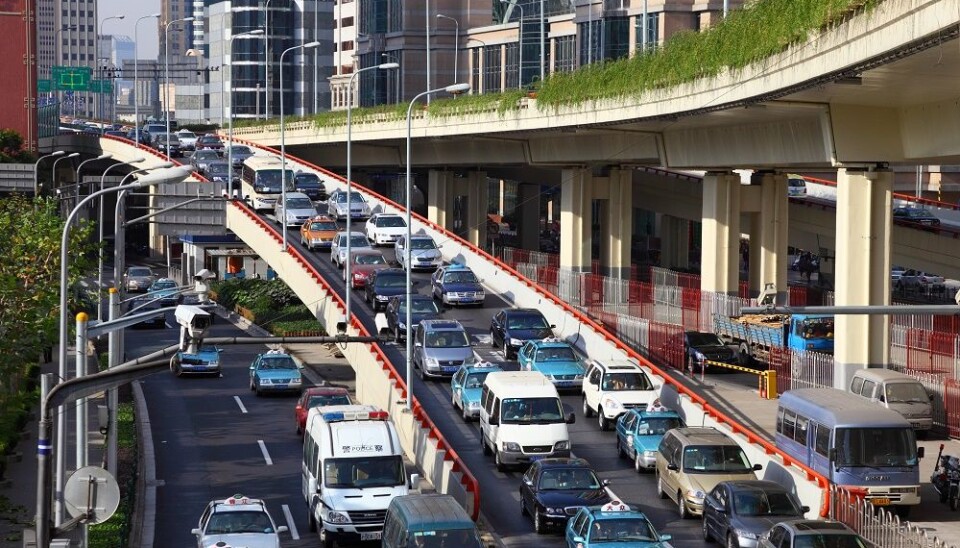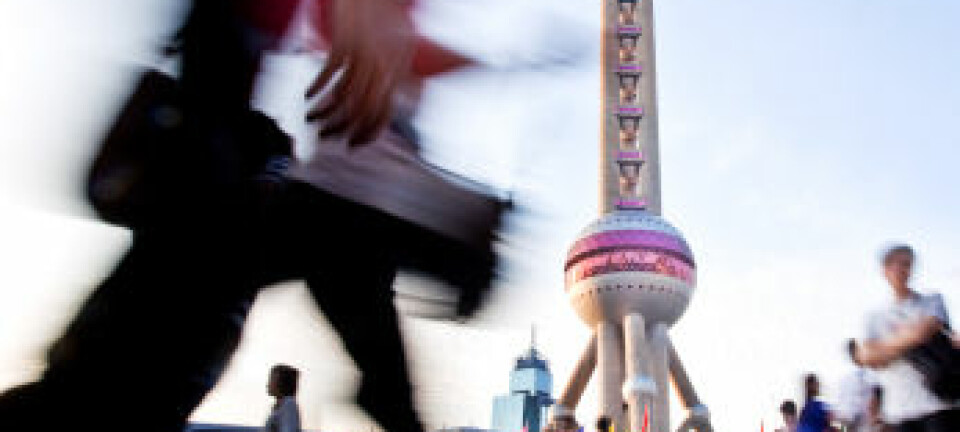An article from University of Oslo

How cars have transformed China
China has become both the world’s largest car market and the world’s largest producer of cars and vehicles. New vehicle sales in China have now surpassed those in the US.
For many years, only very few Asian countries – most notably Japan and South Korea – managed to find their way into the global league of dominant players on the car production scene.
More recently, new Asian countries have joined the race and now approximately every second car that is produced on the globe rolls out from a factory based in Asia.
Kenneth Bo Nielsen and Arve Hansen at The center for Development and the Environment at the University of Oslo have recently published the new book “Cars, Automobility and Development in Asia: Wheels of Change”.
Nielsen points out that even the car consumption is going east.
"After decades of rapid economic growth – half the cars that are produced in the world are sold in Asia," explains Nielsen.
"An increase in car ownership is perhaps one of the most predictable consequences of economic development and increasing income," continues Hansen.
And no place is this more obvious than in China. China has undergone an urban transformation from cities once dominated by bicycles – from the 1950s to the 1990s – to cities now dominated by cars. In 1986 The Chinese ”Flying Pigeon” (Fei Ge) bicycle factory sold a record three million bicycles. Twelve years later, in 1998, the company sold only 200,000. That year, it fired most of its 7,000 workers and moved to a smaller factory.
In 2013, China broke the world record for the most passenger cars sold in any one country in one year – more than 20 million.
Cities built for cars
As the history of the rise of car cultures has shown, cars do not simply enter a landscape, they radically transform it. A huge infrastructure is needed to support a society dedicated to automobility. There not only have to be places to refuel cars, places to purchase and repair cars, but also places to drive them and park them.
Beth E. Notar is an anthropologist of China at Trinity College, Hartford, in the US. She has for several years studied what it means for a society to transform itself from one dominated by walking, biking and taking public transport – to one dominated by automobiles.
"City streets in China, once dominated by bicycles, have been rebuilt to accommodate cars. There has been a demolition and reconstruction of the old urban centres of most Chinese cities, to create highways, ring roads and overpasses. This has happened in other times and places, but the speed and scale of the transformation of Chinese cities is unprecedented," says Notar.
More luxury cars
China has the fastest-growing luxury car market in the world. BMW sales in China jumped 62 per cent in 2011, and BMW has been opening a dealership there almost daily. Lamborghini sales have ‘skyrocketed’ 150 per cent. From the first to the third quarters of 2015, all German luxury cars sales in China outstripped those in the US.
As might be expected, China’s used car market has been growing as well. In 2014, over 6.05 million vehicles were traded. The majority (58 per cent) was sedans, accounting for 3.51 million vehicles, but SUVs, of which 200,000 were traded, are the fastest growing market.
Shanghai-GM’s Wuling Hongguan MPV had astonishing sales in 2014: 750,000 vehicles. These are seven-seat ‘family vehicles’. Seven seats are just right for the current urban Chinese family: a single child, parents and two sets of grandparents (although Chinese urbanites are now allowed to have a second child).
Electric and hybrid car sales in China grew from 38,163 in 2014 to 136,733 in 2015 in total. There is evidence that the Chinese government is working to promote electric vehicles (EVs), electric scooters and electric bicycles (EV-2s). For example, Beijing currently limits licence plates for petrol powered cars to 20,000 per month, but there are no such limits for EVs. Still, this is only a tiny fraction of car sales in China.
China’s motorcycle production and consumption has had a parallel and similarly meteoric rise. China is the largest producer of motorcycles: 23 million were manufactured in 2013. However, over 200 Chinese cities currently have bans or restrictions on motorcycles, presumably to both give preference to cars and to try to manage traffic congestion.
Health consequences
How did this shift from a society characterised by bicycle mobility to one characterised by automobility occur? What does it mean to have millions of new vehicles and millions of new drivers enter the landscape in the span of a few years?
Beth A Notar summarizes the negative consequences in the transformation of urban and rural space and place, the negative impact on public health and the increased mortality.
"As one might envision, the public health consequences of shifting from a bicycle society to an auto-mobile society have been huge. In 2007, China overtook the US as the biggest emitter of carbon dioxide, and since then air quality of major Chinese cities has deteriorated."
In July 2015, a non-profit organisation called Berkeley Earth posted a paper on their website documenting some of the negative health consequences of air pollution in China. The authors argue that approximately 1.6 million deaths in China each year, or over 4,000 deaths per day, are attributable to air pollution. Elites in Beijing and other cities have begun to invest in expensive air filters for their cars and offices.
"A shift to an automobile society has severely impacted mortality. According to a recent China Daily (2011) report: ‘Traffic accidents are the leading cause of death for people age 45 and younger in China’," says Notar.
No going back
Despite the negative impacts of automobility – the destruction of old urban centres, increased smog and lung disease, obesity, and traffic fatalities – given the high status associated with driving one’s own car, as well as the pleasure people find in doing car-related activities Notar feels it difficult to imagine that China will return to the days of streets dominated by millions of Bicycles.
"Cars have been prioritized in city planning for so long, it is extremely difficult trying to re-encourage bicycle use now. Still, one urban planner from the city of Chongqing told me in the summer of 2015: ‘We have decided to follow the US model of car culture, but it is unsustainable for us. We need to find other solutions’. Let’s hope it is not too late."
As Hansen and Nielsen concur, it is the high social status associated having one’s own car to drive around, the comfort of four-wheeled, airconditioned mobility, as well as the pleasure people find in doing car-related activities that help to sustain the popularity of the car.
































